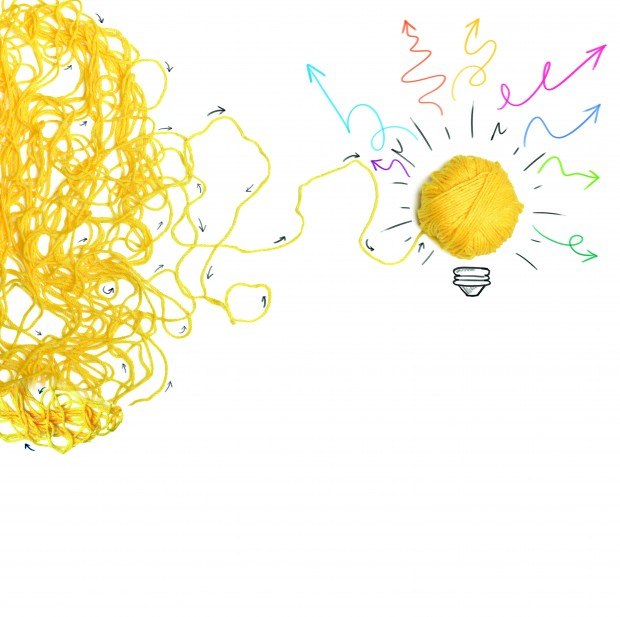 CEOs and managers in companies of every size face this problem all the time: When someone pitches a potentially game-changing idea, how do they know if the innovation has a chance of working? Will it be a game-changer or a dud?
CEOs and managers in companies of every size face this problem all the time: When someone pitches a potentially game-changing idea, how do they know if the innovation has a chance of working? Will it be a game-changer or a dud?
An analytical exercise may make that decision process easier, according to Robert Carraway, associate professor of business administration at the University of Virginia Darden School of Business in Charlottesville. He explored this recently with a class of insurance professionals taking part in The Institutes’ Executive Education Program, held from March 22-27 at Darden.
The process essentially puts the idea under a microscope, exploring its potentially positive and negative consequences through a series of assumptions. It is designed to give the executive a way to step back and assess innovation through an analytical learning process: assuming the idea will work, and then exploring logical consequences, and then doing the same with the assumption that it won’t work. An executive will be able to determine if an idea has a good chance of working, or if cost, practicality and other negatives may make the proposal unfeasible.
If all signs point to the first option, then the executive can proceed with the plan. If negatives outweigh the positives, it is time to move on with efficiency, and know that there is time to develop many more ideas and innovations down the line.
Carraway’s students pursued the exercise through the study of a slightly fictionalized scenario involving a financial executive who wanted to launch a new home-mortgage product for existing premium customers. How should executives move the initiative forward, if at all?
Carraway had the class explore assumptions on both sides of the equation.
If the home-mortgage product for high-net customers is a good idea, how would it translate into growth and sales, and what are the risks involved in transforming the idea into a reality?
On the flip side, what if the loan product is an ill-advised move? What are the consequences if assumptions of its benefits are wrong? Without picking a winning argument, the insurance professionals and executives explored both sides.
Carraway explained to Carrier Management that the assumption/learning process isn’t easy, but it can be effective in figuring out how to pursue innovative ideas that will work best for a given organization, and avoiding those that won’t.
“Trying to recognize those things that you are assuming to be true—it is hard,” said Carraway, who teaches quantitative analysis courses in Darden’s MBA program.
Carraway said the analysis process becomes quite logical once an executive explores assumptions about potential consequences of the innovative idea, both good and bad. “Once you are able to flesh out those assumptions you are making, then you can go out to validate them,” he said.
The thought-process to validate the assumptions involves determining “if those assumptions hold.” That then transforms into a learning process focused on figuring out what is unknown about the innovative idea. Pursuing this intellectual process helps efficiently ferret out innovative ideas that have merit from those that may be too risky or flawed, Carraway noted.
“The very fact that you feel the need to validate an assumption is recognition that you don’t know something. And if you did know it, it would be valuable to you,” he said.
In going through that process, an executive or manager can determine that an innovative idea may not be feasible or even good. Learning this, however, is never bad, Carraway added.
“Even if learning information tells you it is a bad idea, it is the learning you could use to come up with another idea,” he noted. “A lot of this is turning innovation into learning, and learning being driven by innovation—it is about how one drives the other, and how you need both.”
In the end, the process of incorporating learning and assumptions based on the consequences of ideas helps corporations become efficient. Focus the learning “on what you really want to know,” Carraway advises.
“If your intuition told you it is a good idea or bad idea, what could change your mind,” Carraway asked his students as they worked through the home loan product example. “Let’s try to recognize the assumptions making us believe this is a good idea or bad idea. Recognize the assumptions and get them out on the table. Then let’s go about identifying the ones we are least sure of, or most important, and let’s try to validate those assumptions.”
Once that is done, he said, executives can either invest in the idea, or move to the next one.





















 Viewpoint: You’re at a Competitive Disadvantage If You’re Not Innovating
Viewpoint: You’re at a Competitive Disadvantage If You’re Not Innovating  CEO Viewpoint: Predict and Prevent Just Makes Economic Sense
CEO Viewpoint: Predict and Prevent Just Makes Economic Sense  AI-Powered Insurance Product Development Is Going to Take Some Powering Through
AI-Powered Insurance Product Development Is Going to Take Some Powering Through  Time-Tested Loss Reserving Methods Challenged: AM Best
Time-Tested Loss Reserving Methods Challenged: AM Best 








